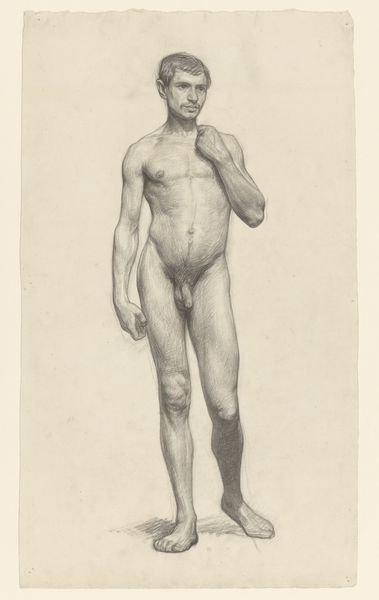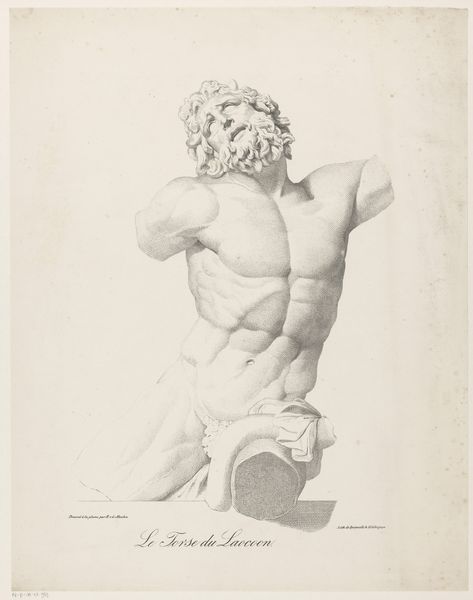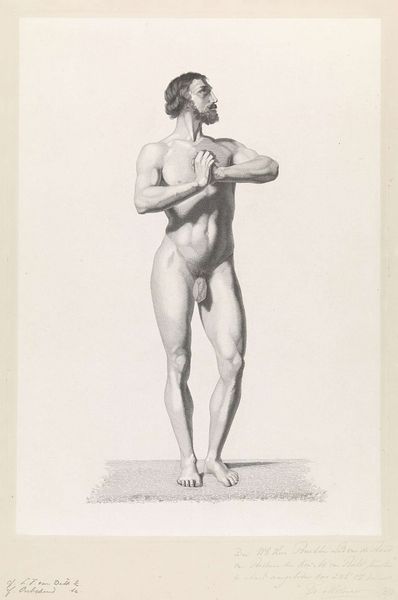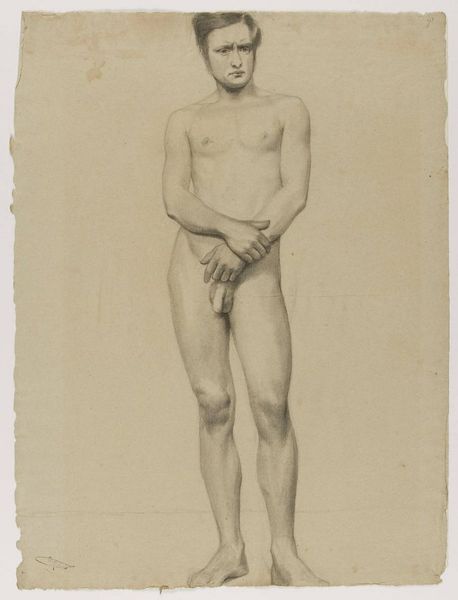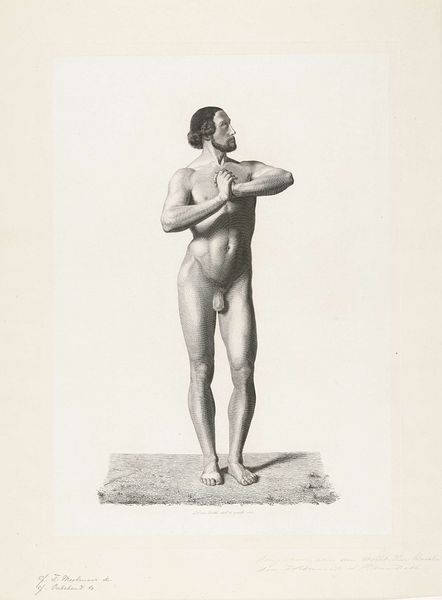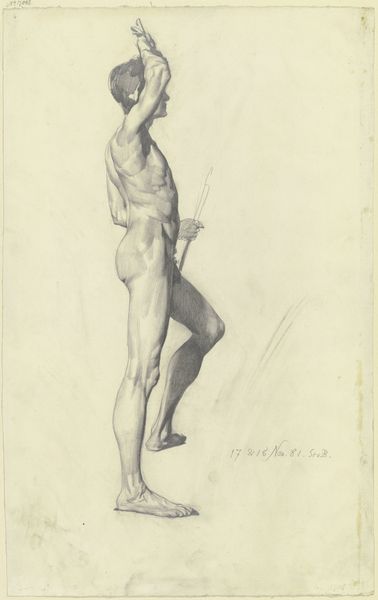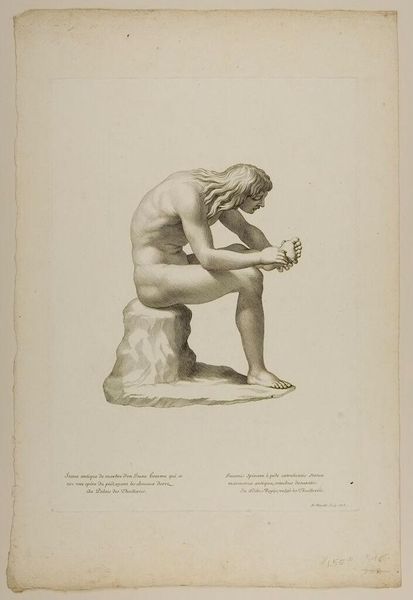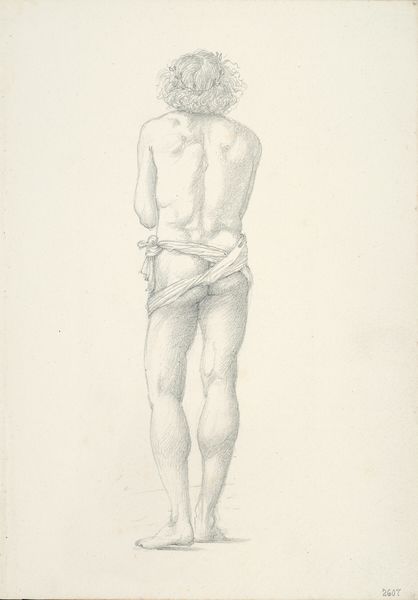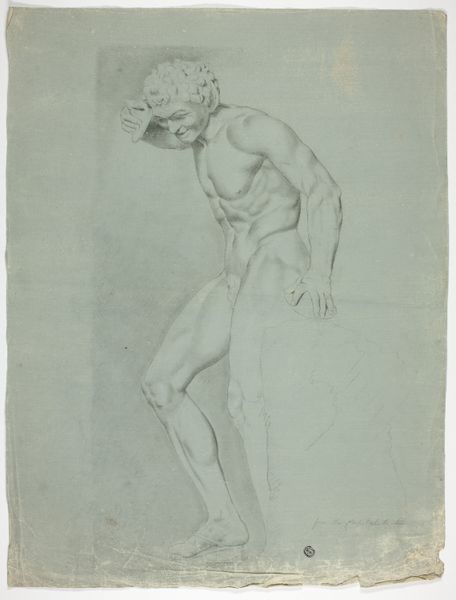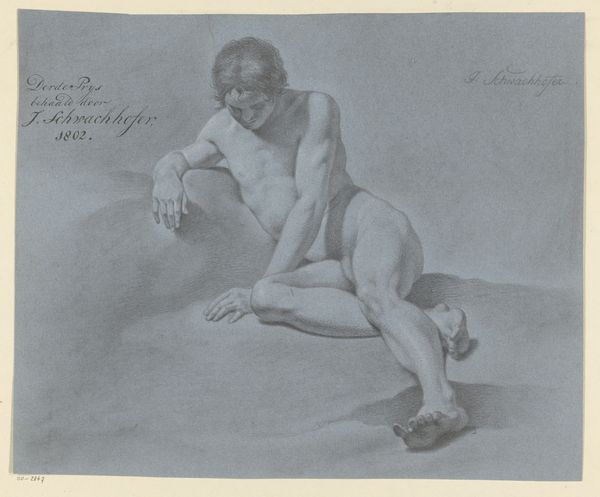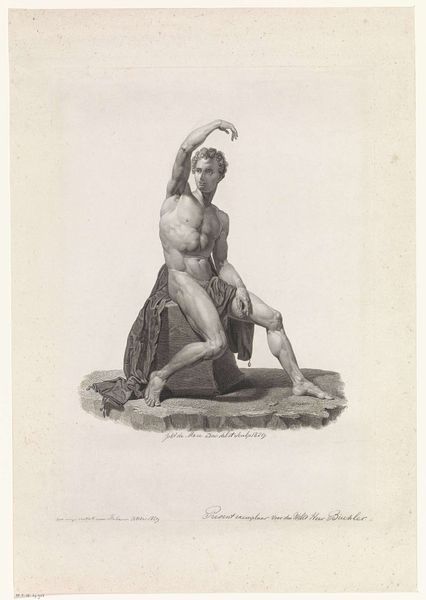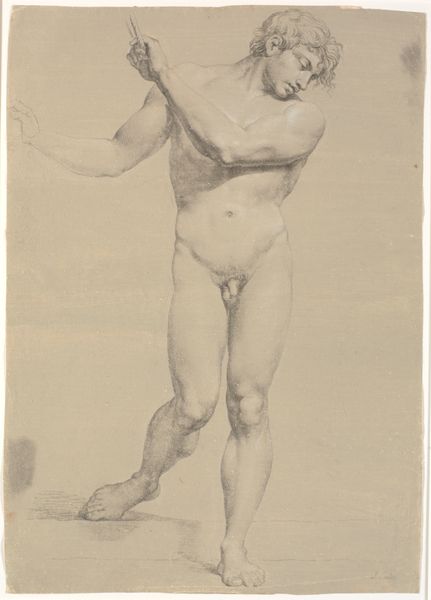
photography, gelatin-silver-print
#
portrait
#
african-art
#
photography
#
historical photography
#
gelatin-silver-print
#
graphite
#
realism
Dimensions: height 238 mm, width 173 mm
Copyright: Rijks Museum: Open Domain
Curator: Standing before us is "Portret van Majoera-Ka-Ma," a compelling photograph taken between 1883 and 1884, held here at the Rijksmuseum. Friedrich Carel Hisgen captured this image using the gelatin-silver print process. Editor: My first impression is of a strong, weathered face. There's an almost sculpted quality to the features, highlighted by the stark lighting. It exudes a sense of quiet dignity, almost monumental despite its relatively small scale. Curator: Precisely. Hisgen's work is particularly significant as a document of its time, part of a broader colonial project involving visual representation and scientific categorization. This portrait belongs to a series titled "Les Habitants de Suriname". Editor: "Inhabitants of Suriname" I'm immediately drawn to the subject's gaze; even in profile, there’s a weight to it. It suggests a deep connection to the land, a rootedness emphasized by his bare chest. Do you think Hisgen consciously tried to tap into that indigenous symbolism? Curator: The politics of representation at the time is more about “othering”. It is not beyond to wonder whether Hisgen understood or intended to depict indigenous beliefs. More importantly, the purpose may have been associated with pseudoscientific ideologies about racial differences. Editor: True, but regardless of Hisgen's intent, the image retains a symbolic potency. The man’s slightly furrowed brow can signify resilience, or determination amid adversity. This photograph encapsulates themes that endure over a long period of history. It acts as a symbol for the human ability to withstand adversity, mirroring qualities recognized in many ancient icons. Curator: Your emphasis on the visual vocabulary prompts me to think of the photograph’s composition, and its presentation, how it impacts perceptions today. Gelatin-silver prints yield very sharp details which may offer the impression of factual authenticity. However, photography back then did not fully avoid manipulation; this creates questions around what constitutes historical documentation and ethnological studies. Editor: The technical aspects, the historical backdrop, it all layers into a deeper understanding, doesn't it? Curator: Indeed. Examining "Portret van Majoera-Ka-Ma" offers more than just an aesthetic experience; it presents an invitation to engage critically with questions surrounding representation, history, and enduring symbolism. Editor: Ultimately, that layered experience makes this a rewarding encounter—an example of visual information acting as a silent teacher about our linked cultural experience and shared symbolic languages.
Comments
No comments
Be the first to comment and join the conversation on the ultimate creative platform.
